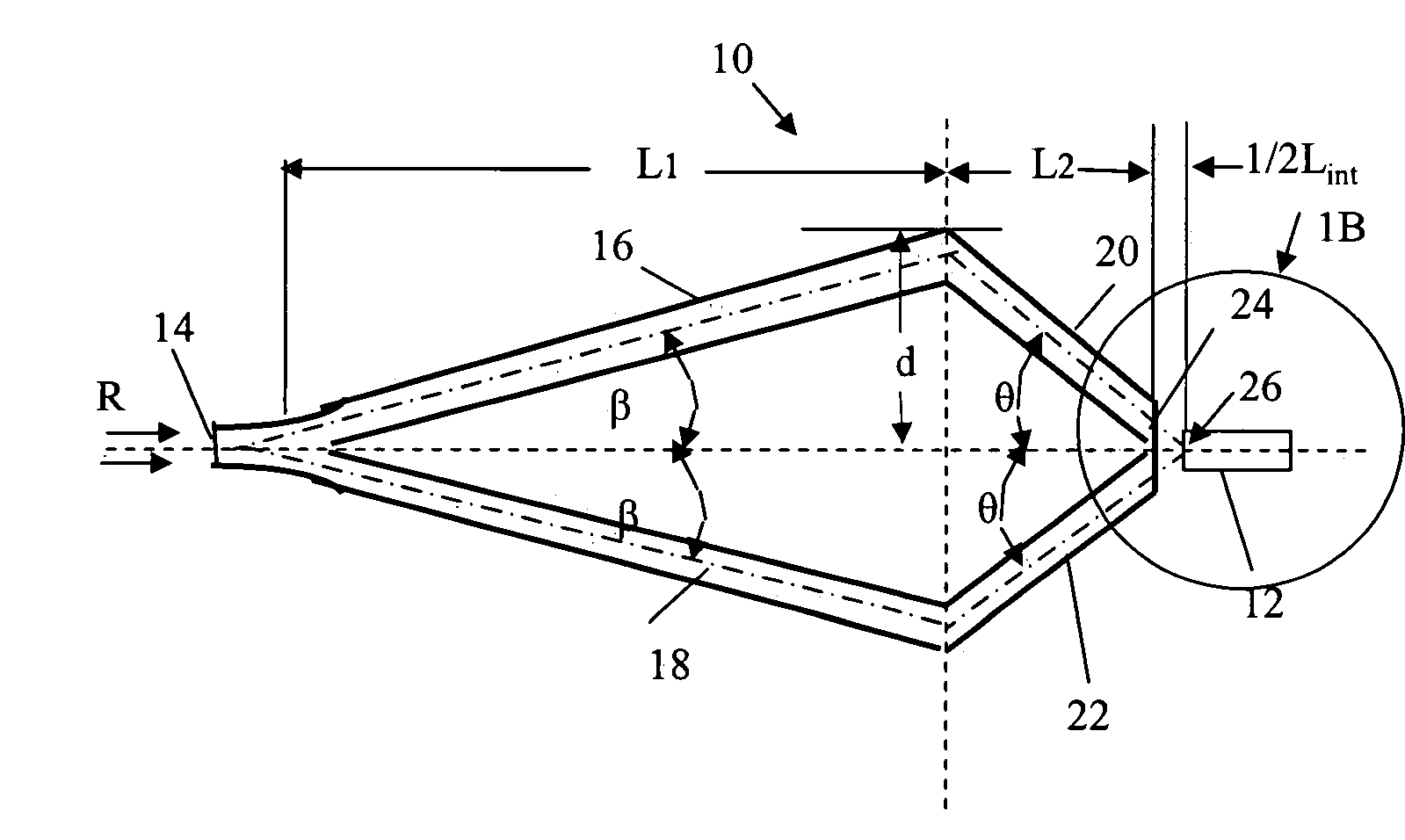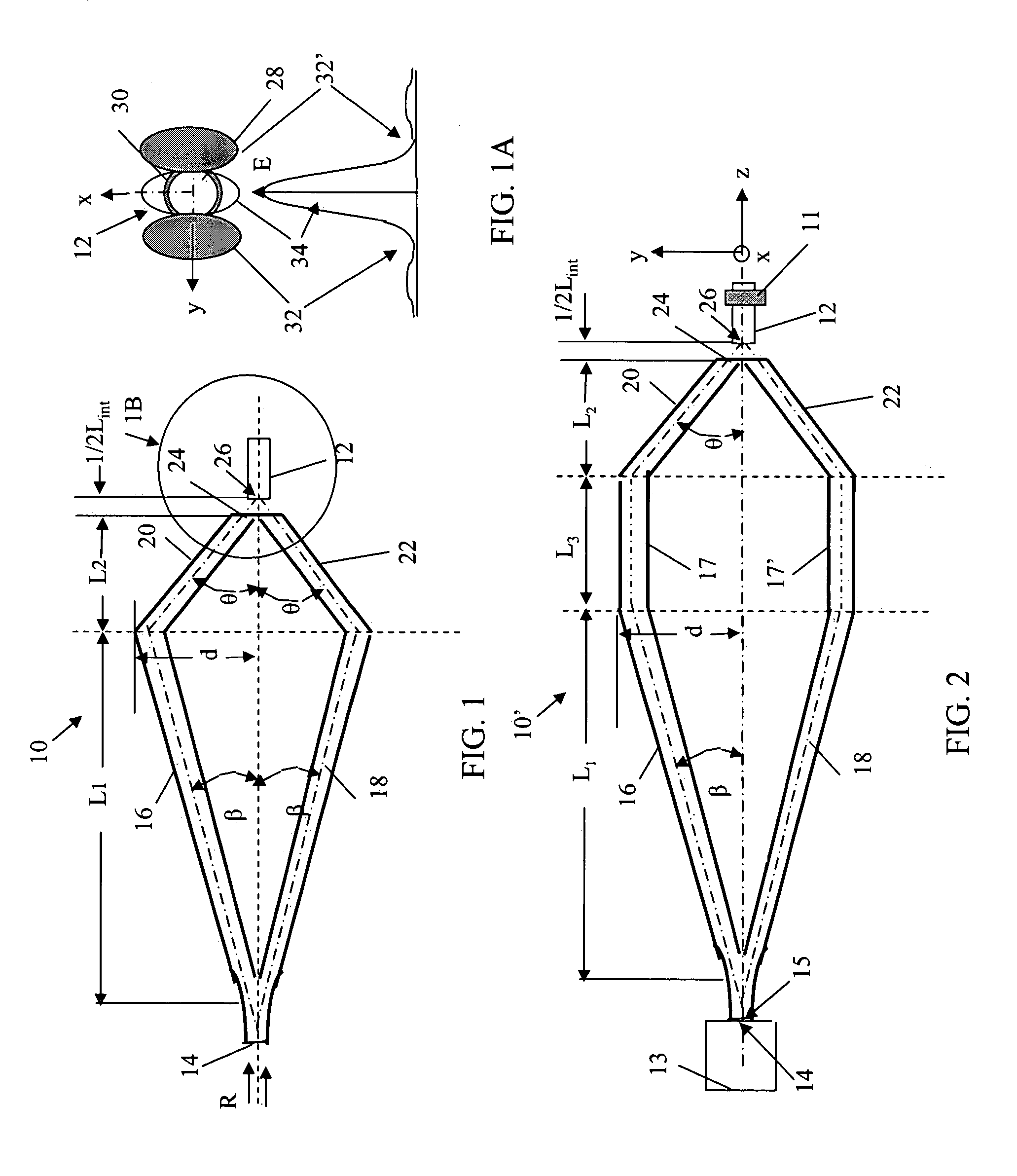Optical coupling device for single mode optical fibers
a single-mode optical fiber and coupling device technology, applied in the direction of optical waveguide light guide, optical elements, instruments, etc., can solve the problems of limited diffraction of focused radiation spots, large number of optical amplification systems, and large number of laser sources, and achieve the effect of maximizing energy transfer efficiency
- Summary
- Abstract
- Description
- Claims
- Application Information
AI Technical Summary
Benefits of technology
Problems solved by technology
Method used
Image
Examples
example
[0053]Using the calculations shown in the appendix the following results are obtained for a coupler such as illustrated in FIG. 1, the length of the channels 16, 18, 20 and 22 and the diverging and converging angles β and θ for a particular type of single mode fiber, specifically a Corning SMF 28. This fiber has a typical MFD=8.2 μm and a NA=0.14. For this fiber and at λ=1550 nm, V=2.33. For an input (to the fiber) beam waist ω0=8.1 μm, V×ω0=18.87 μm, yielding an optimum interference angle (converging angle θ) of about 2.9°.
[0054]The interference is localized where the two output beams cross as illustrated in FIG. 1B. Having determined the converging angle, simple geometrical considerations from FIG. 1B indicate that the input end of the single mode fiber 12 (in this example the input face of SMF28) may be placed anywhere between +1 / 2Lint and −1 / 2Lint from the crossing point, in this instance a total Lint=162 μm.
[0055]Having defined the interference zone, it is noted that maximum en...
PUM
 Login to View More
Login to View More Abstract
Description
Claims
Application Information
 Login to View More
Login to View More - R&D
- Intellectual Property
- Life Sciences
- Materials
- Tech Scout
- Unparalleled Data Quality
- Higher Quality Content
- 60% Fewer Hallucinations
Browse by: Latest US Patents, China's latest patents, Technical Efficacy Thesaurus, Application Domain, Technology Topic, Popular Technical Reports.
© 2025 PatSnap. All rights reserved.Legal|Privacy policy|Modern Slavery Act Transparency Statement|Sitemap|About US| Contact US: help@patsnap.com



